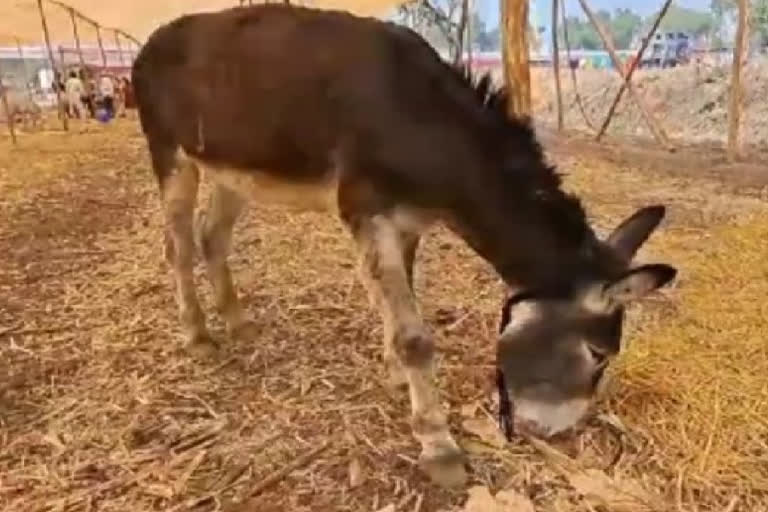Kolhapur: With an effort to put a check on the continuous decline in the population of donkeys, an exhibition was held in Kolhapur from February 21 to 23. The exhibition will be the first of its kind in the country.
Though donkeys are very useful not only in unburdening the workload of human beings but for some other purposes but the population of this mammal is dwindling in the country. In an effort to sensitize the people about the usefulness of donkey, Siddhgiri Agricultural Science Center and Animal Husbandry Department organised the donkey exhibition during the Sumangalam Panchamahabhuta Lokotsava at Kaneri Math in Kolhapur.
According to the organisers, in rural areas donkey is not only considered to one of the most useful creatures but its milk is also treated as one of the most nutritious food. Donkey milk is useful for people with lactose intolerance. A donkey gives one litre of milk a day and a litre costs Rs 7000 to Rs 10,000.
Unfortunately, enough the population of donkey is reducing every day. According government livestock census figures the population of donkey has reduced to more than 61 percent in between 2012 to 2019. Presently the number of donkeys in the country is meagre 120,000. Not only that in Rajasthan- which is home to one-fifth of India's donkeys, the population has plunged by around 72% — from 81,000 to just 23,000.
Apart from donkeys, indigenous breeds of cows, buffaloes, goats, horses, dogs and cats were also included in the exhibition. Students along with farmers gathered in huge crowds at the exhibition. Apart from providing a detailed information about the animals, a beauty contest was arranged for the animals. A pavilion was erected for the animals, who participated at the exhibition.
The best cow and bull were awarded Rs 1 lakh each and Rs 51,000 was given to the best buffalo. A cash prize amounting to Rs 1 lakh was handed over to the best horse in the 'Desi Ghoda' category. While in the donkey exhibition and beauty contest fetched prizes and awards amounting to lakhs.
At Kaneri Math, efforts are being taken to increase the population of indigenous species. The monastery has a cow-shed for native cows and a shelter for stray dogs, where thousands are accommodated. This apart, the animals are provided two meals a day along with medication.



